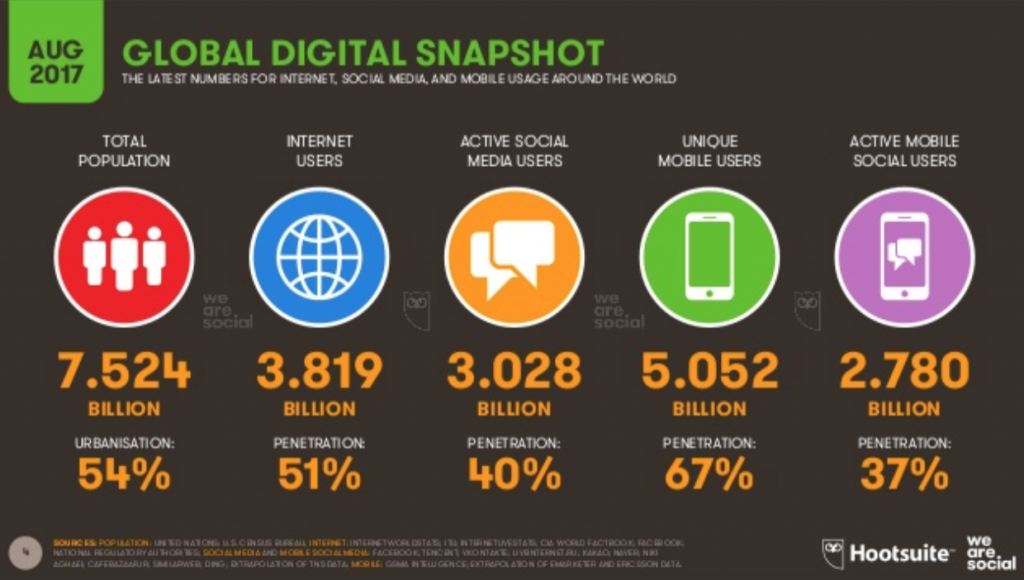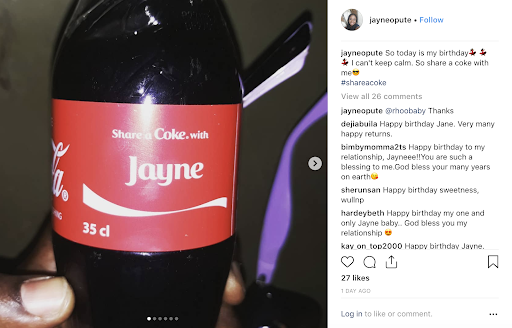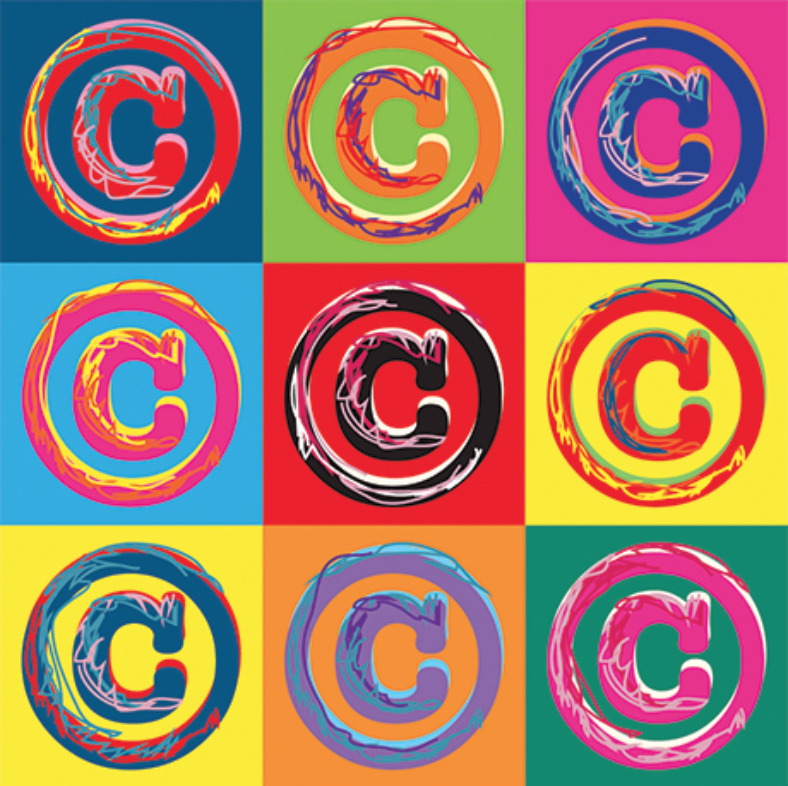There are no ifs or buts: modern day marketing strategies need to include social media outreach. Three-billion people have access to a social media account, which means that the potential reach of an organization is huge. Social media marketing provides you with great power to connect.

We Are Social
But, you know what they say about great power? It comes bundled with great responsibility, and those using social media to connect with their audiences have a duty to make sure they do so fairly.
That means not infringing on social media copyrights and making sure you play by the rules.
The majority of content on social media is user generated, which means that many of the brands using and sharing it don’t own the rights. Getting your head around the complexities can be complicated.
We have put together a guide that includes everything a marketer should know about social media copyrights. Understand what you and can’t do when connecting with your audience and trying to increase your brand’s exposure.
Always Ask for Permission When it’s Not Your Content
User-generated content (UGC) is leading the way—and is five times more likely to convert customers than non UGC. Social media platforms have a plethora of UGC lying around, so it comes as no surprise that marketers desire to use some of this content for their campaigns.
However, you can’t just go and take content the same way you can’t walk into a shop and take a shiny item off the shelf without paying. Whether it’s images, videos or memes, the content owner will need to grant permission if you want to use something from their social media on your brand’s account.
There is nothing quite like a “please and thank you” in life, and it’s no different in the online world. Reach out to the owner of the content and ask for permission to reuse it for your campaign. More often than not, content owners are excited to be part of a brand campaign and will be happy to give you the rights to repurpose.
If you have to reach out to multiple content owners, draft a template to save time. You can still make the outreach method personalized with a few individual touches to each message, but having a template to work from will save time. Social media provides you with a platform where directly reaching out is done with minimal fuss. Slide into the DMs, anyone?
Finding Great Workarounds
There are times where you won’t need to ask for permission from the content owner directly. This is known as “implicit permission”, which is where users knowingly contribute to one of your campaigns with their content.
You may run a campaign around a specific topic and add a particular hashtag, then ask your audience to contribute by submitting their photos under the same hashtag. Once they have sent the image with the hashtag, they are permitting you to use that particular piece of content.
Many brands used hashtags to display other people’s content in their campaigns. Coca-Cola used the Share a Coke campaign to reveal their audience sharing photos of their personalized Cokes on Instagram and Twitter.

When you go down the hashtag route, make sure you have clear terms and conditions that explain that you will have the right to reuse the content. Be transparent in every step.
Embedding is another way to get around copyright issues. Most social media platforms have an option for you to embed content, whether it’s a hilarious gif or eye-catching image. Embedded content automatically includes a link back to the source, giving the owner credit in the process.
Embedding isn’t quite the same as owning the content outright, but if you don’t mind a link and credit back to the owner, it’s a handy way to display engaging content without needing consent.
Communication is Key
Ok, so now you know that you need to ask for permission, but perhaps it might already be too late, and you used someone else’s picture of a dog doing something super cute without consent. Now the image owner has found out, and they’re not happy. Oops.
The first port of call is to be quick in your response to any complaints around accidental use of UGC. Don’t get defensive and instead opt for apologetic and friendly language in your response. Most importantly, make sure that you don’t come across like a cold, faceless brand.

The last thing you or anyone in the organization wants is a lawsuit on their hands. Those who nip it in the bud and respond quickly are more likely to come to resolution that makes everyone happy. There’s no need to get the pesky lawyers involved.
Know Your Market
If you find yourself partaking in the creation of social media campaigns, it’s good to become an expert in your area—especially if social media is your bread and butter. Read posts (like this one) that explain the grey areas. Educate yourself so that you know the ins and outs.
Being aware of each platform has plenty of benefits, as different ones might have rules. The rules are generally similar, but there may be nuances between each, so it’s good to check on the specific platform you are using first.
Twitter, Facebook, Instagram—they all have T&Cs available to the public. Being aware of them minimizes the chances of infringing on copyrights.

Make Social Media Copyrights Part of Your Company Culture
There’s no better way to increase awareness than by spreading the word. Social media copyrights are still grey areas for many people, which is why it’s a good idea to teach your employees about what they can and can’t do on the platforms.
Once you have become an expert yourself, explain how copyrights work and how employees should ask for permissions. Add a section in the company handbook/onboarding process and make it clear about the possible repercussions for using unlicensed content.

Going one step further, if social media marketing accounts for a large proportion of your outreach, consider taking out insurance. You can get insurance for pretty much anything these days, and safeguarding yourself against a potential social media copyright lawsuits is an route worth exploring..
Having insurance doesn’t mean that you can go around stealing other people’s content and then call the lawyers in. But it does provide peace of mind, in case you run into any unforeseen situations.
Be Super Transparent
We live in the age of information, which means that consumers are more clued up now than ever before. 88 percent of people research online before making a purchase decision, and that kind of access trickles down to every corner of the Internet.

Respect the fact that your audience is “in the know”, especially when asking them to contribute content. Assume they already know their rights, and understand how the game works when it comes to repurposing content.
Being transparent and upfront with them means they will feel more respected, which should increase the chance of getting the greenlight to use of their content. To be completely on the safe side, include sections about UGC and social media copyright in your T&Cs.
This way there is always something of substance for someone to draw back to if there are any misunderstandings. It doesn’t need to be in depth; just a few sentences about how you may use certain content.
Be Aware of Repercussions
Finally, it’s essential that you are aware of repercussions and how to respond, especially if you are late to reply to any action from an aggrieved content owner. The worst-case scenario is a potential lawsuit where you may end up having to pay for the rights of the image.
Something so drastic will leave a bad taste, and the brand image will suffer—you don’t want to be known as a company that illegally takes content online. The knock-on effect of that will be unhappy customers. And it all goes downhill from there.

Word spreads fast online, and before you know it, you could be facing a tarnished brand image and be in crisis control mode. So it’s best to avert anything negative happening by being prepared and knowing your rights.
Use Tools to Help You
Today, it’s more important than ever to make sure that you have the rights for content you reuse online. GDPR and increased privacy concerns have opened a can of worms, and organizations need to be more careful than ever when displaying content that isn’t theirs.
UCG Rights Management by TINT clears the muddy waters that surround copyrights by offering a seamless way to request content rights. Personalize messages and let creators know how much you love their work. Build relationships with a network of people that are creating cutting-edge content.
A Better Social Media Outreach For Everyone
Social media is such a powerful platform that it can turn a brand or influencer viral overnight. Audiences want to be more involved with brands these days, which is a positive aspect. Everyone wants to have fun, and brands can tap into that—just make sure that it’s done fairly and legally by…
- Asking for permission
- Finding workarounds
- Being communicative
- Understanding the market
- Embedding copyright knowledge into your company culture
- Being transparent
- Understand potential repercussions
Are you ready to integrate UGC into your marketing strategy? Schedule a free strategy session with TINT today.





